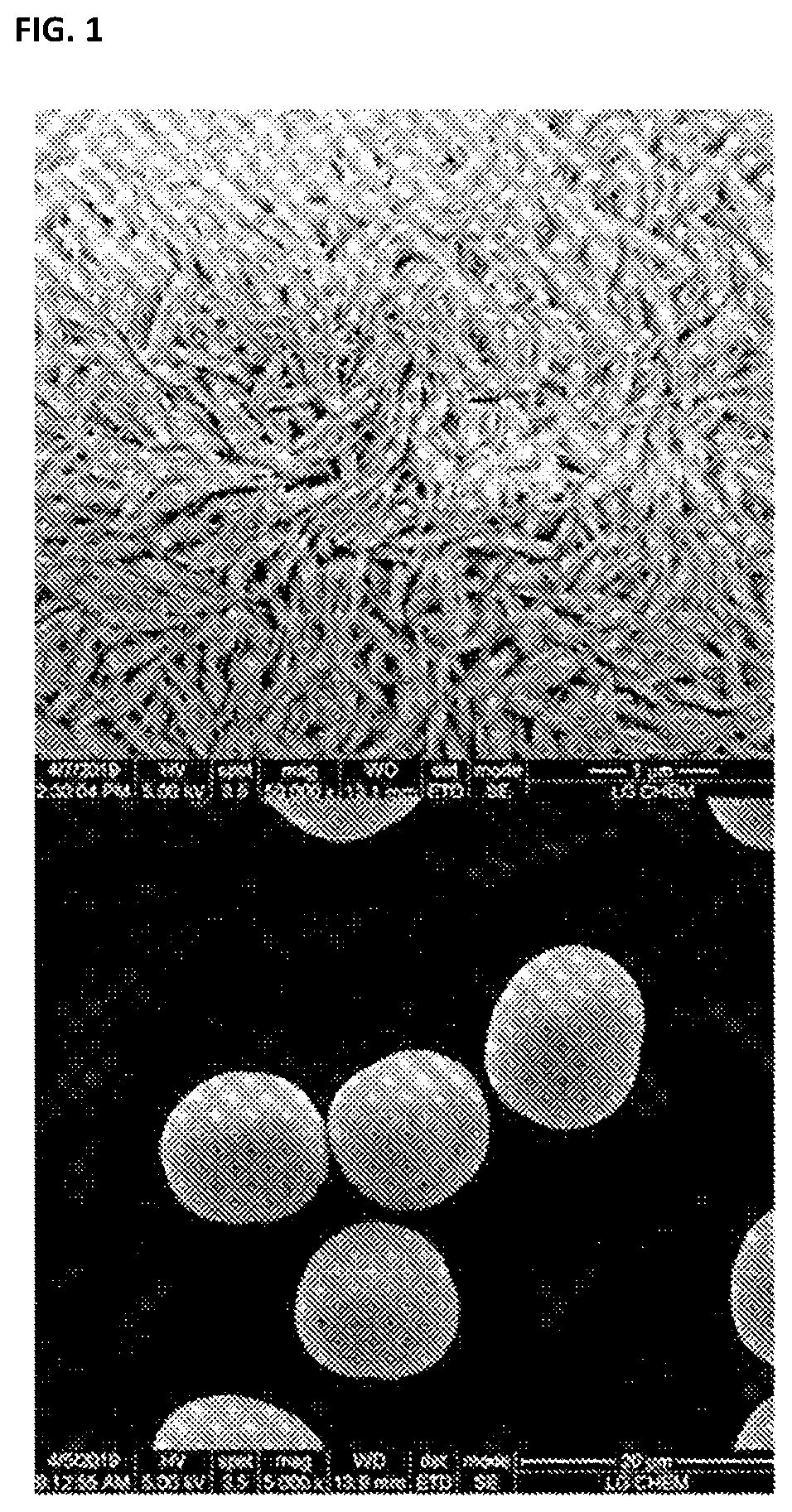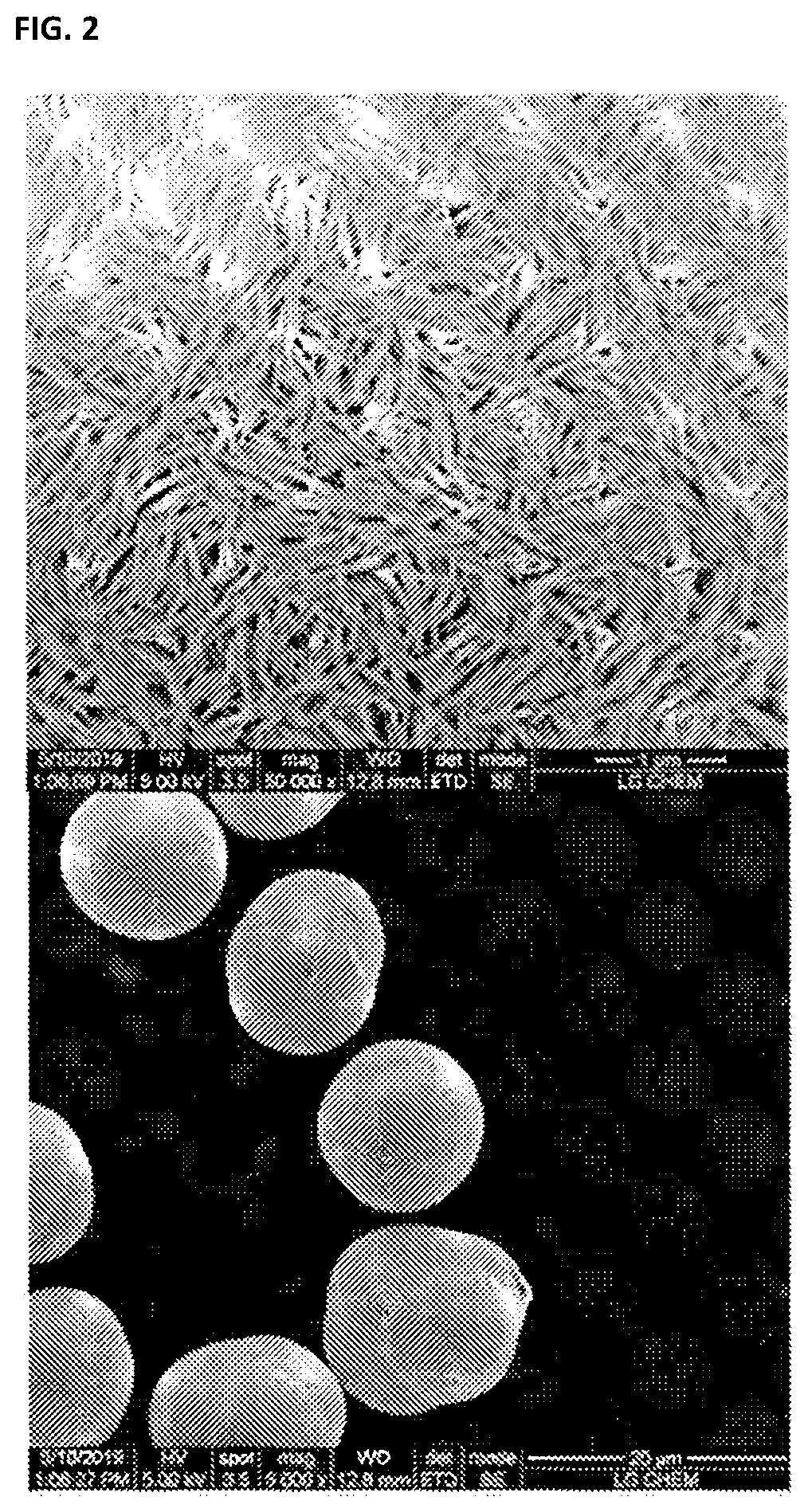Positive Electrode Active Material Precursor for Secondary Battery, Preparation Method Thereof, and Method of Preparing Positive Electrode Active Material
a technology of active materials and secondary batteries, which is applied in the direction of active material electrodes, nickel compounds, cell components, etc., can solve the problems of reducing the reactivity of lithium sources and doping sources, and affecting the reactivity of secondary batteries. , to achieve the effect of reducing the surface density of positive electrode active material precursor particles, reducing the size of primary particles, and improving capacity and rate capability
- Summary
- Abstract
- Description
- Claims
- Application Information
AI Technical Summary
Benefits of technology
Problems solved by technology
Method used
Image
Examples
example 1
[0087]After 4 liters of distilled water was put in a batch-type reactor (capacity 20 L), the temperature was maintained at 60° C., oxygen gas was supplied at a rate of 3 L / minute, and stirring was performed at 400 rpm.
[0088]A transition metal aqueous solution with a concentration of 2.28 mol / L, in which NiSO4, CoSO4, and MnSO4 were mixed in amounts such that a molar ratio of nickel:cobalt:manganese was 92:4:4, was added to the reactor at a rate of 1200 ml / hr, and a 15 wt % aqueous ammonia solution was continuously added to the reactor at a rate of 108 ml / hr (molar ratio of ammonium ions to total transition metal cations=0.35). Also, a 40% wt % aqueous sodium hydroxide solution was added at a rate of 330 ml / hr, and the addition of the aqueous sodium hydroxide solution was adjusted so that a pH was maintained at 11.1.
[0089]In the first 30 minutes, nucleation was performed while stirring at 700 rpm, and, thereafter, particles were grown while stirring at 300 rpm. When the inside of the...
example 2
[0090]A positive electrode active material precursor was prepared in the same manner as in Example 1 except that the aqueous ammonia solution was continuously added to the reactor at a rate of 62 ml / hr (molar ratio of ammonium ions to total transition metal cations=0.2).
example 3
[0091]A lithium source LiOH was added to the positive electrode active material precursor prepared in Example 1 and mixed such that a molar ratio of Li / Metal (Ni,Co,Mn) was 1.03, and, after Al2O3 and ZrO2, as doping sources, were further mixed, the mixed powder was introduced into an alumina crucible for a heat treatment. Thereafter, after sintering was performed at 550° C. for 5 hours, the sintered powder was disintegrated, again introduced into the crucible, and then sintered at 760° C. for 10 hours to prepare a positive electrode active material of lithium transition metal oxide.
PUM
| Property | Measurement | Unit |
|---|---|---|
| aspect ratio | aaaaa | aaaaa |
| specific surface area | aaaaa | aaaaa |
| particle diameter | aaaaa | aaaaa |
Abstract
Description
Claims
Application Information
 Login to View More
Login to View More - R&D
- Intellectual Property
- Life Sciences
- Materials
- Tech Scout
- Unparalleled Data Quality
- Higher Quality Content
- 60% Fewer Hallucinations
Browse by: Latest US Patents, China's latest patents, Technical Efficacy Thesaurus, Application Domain, Technology Topic, Popular Technical Reports.
© 2025 PatSnap. All rights reserved.Legal|Privacy policy|Modern Slavery Act Transparency Statement|Sitemap|About US| Contact US: help@patsnap.com



